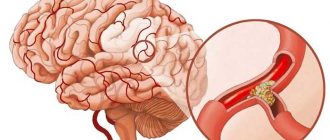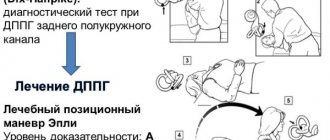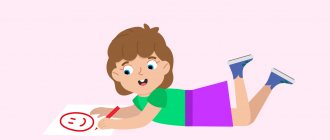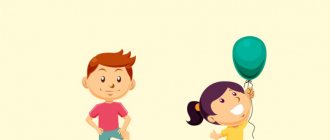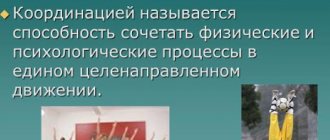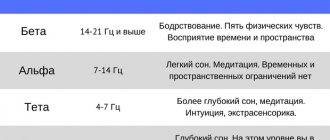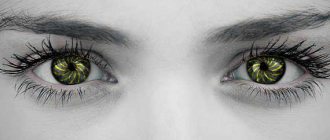Art therapy for children: exciting techniques
The state of mental health of children and adolescents today is an important task not only for parents, but also for the teaching community. A healthy child is, first of all, a creative, cheerful, open person who knows himself and the world around him. We'll tell you about several types and exciting art therapy techniques that are perfect for both young children and teenagers.
Classical art therapy initially included such types of visual art as painting, modeling, photography, and graphics. However, in the modern world, new types of creativity and self-expression are emerging. Now popular are bibliotherapy, drama therapy, dance therapy, fairy tale therapy, video and audio therapy, mask therapy, sand therapy and much more. We will focus on the most accessible and popular types of creative therapy.
Simple tips
- Don't forget that art therapy is a creative process. The main thing is to have fun, not the result.
- Let your child choose the method and materials for art therapy. As practice shows, younger children often choose sand, and schoolchildren choose gouache.
- Children should not experience difficulties during the creative process. Any efforts during the work should be interesting, original, and enjoyable for the child.
Isotherapy
The most popular type of art therapy is drawing. A wide variety of art materials are suitable for it: paints, pencils, wax crayons, pastels, paper of various textures, brushes of different sizes and hardness, plasticine, etc. There are several drawing therapy techniques.
- Marani I
are drawings made in an abstract manner that has no rules: we draw the way we want. In appearance, soiling sometimes looks like destructive actions with paints, crayons, pencils or plasticine. However, the game form of this format allows the child to satisfy destructive impulses.
- Monotype
is a basic graphic technique. On a smooth surface - glass, plastic board, film - a drawing is made with gouache paint. A sheet of paper is placed on top and pressed to the surface. The result is a mirror image print.
- Drawing on glass.
You will need a smooth glass surface and paints (a window, glass table or mirror will do). Children are fascinated by the process of drawing: the paint glides softly, it can be smeared with a brush and fingers, since it does not absorb into the glass surface and does not dry out for a long time. The described technique is used for the prevention and correction of anxiety, social fears and fears associated with the results of activities.
- Drawing with dry leaves and small bulk materials.
Using leaves, dry winds, bulk materials and PVA glue, various designs are created. An image is applied to a sheet of paper with glue. Then the material, previously crushed or ground, is scattered on top. Excess, unadhered particles are shaken off. The described technique of creating images is suitable for children with severe motor awkwardness, negativism, and tightness; it promotes the process of adaptation to a new space and gives a feeling of success.
- Drawing with fingers, palms, other parts of the body
is a kind of game with paints and new tactile sensations, during which destructive impulses and actions are expressed through prints on paper. The method is highly valued by child psychologists.
For older children, types of isotherapy such as painting with liquid acrylic or using the alcohol ink technique are suitable.
- Liquid acrylic or “Fluid Art”
is a modern type of creativity, whose main feature is that a person does not need to have any drawing skills to create a work of art. The process involves feelings such as intuition and creativity, and the technique is so simple that beginners learn it immediately. Liquid acrylic painting can be recommended to those who like to experiment, love abstract paintings, want to learn how to draw from scratch and need relaxation.
- Alcohol ink
is a technique of drawing with special ink by blowing it over a surface with a hairdryer. Creating paintings using this technique is similar to creating fancy patterns and shapes in the form of wavy geometric figures, and the play of paint is actually created by itself. All the artist needs to do is apply the dye and use his imagination.
Colored world. Allowance for children 5-6 years old.
This manual is included in the educational complex “Steps to School”, which presents a unique system for the development of school-significant functions and preparing children for school. The tasks in this manual will allow the preschooler to gain a more complete understanding of colors and their combinations, introduce them to the techniques of mixing colors, and also practice finding geometric shapes in a complex design. Complies with the Federal State Educational Standard for Preschool Education (2014). The text in the manual is intended to be read by adults to children.
Buy
Sand therapy
Who among you and I did not play in the sandbox as children?
It is useful for children to sculpt sand figures, because this is how they can develop thinking, imagination and, most importantly, fine motor skills of the fingers. In addition, in the process of working with sand, an additional emphasis is placed on tactile sensitivity. Working with sand can be used either alone or in a group if the sandbox is divided into several sections. In this way, an atmosphere of trust and integrity is achieved, and interaction in the group is established. For classes, the child will need a small sandbox, a container of water and many different molds so that the child can create a composition in the sand, describe and explain his work of art.
Dance therapy
This technique allows you to liberate the child not only physically, but also emotionally.
Here the body is a tool, and movement is a process that helps you experience, recognize and express your feelings. In modern dance therapy, there are a wide variety of dance styles. Their choice depends on the physical and emotional characteristics and preferences of the child. Dance can become a powerful therapeutic tool that can reveal, develop and correct not only the physical, but also the emotional qualities of the individual. Just turn on your favorite music and dance together! Do not offer your child specific movements; let him choose them himself.
Music therapy
Today, there are passive and active forms of music therapy. In passive music therapy, the child listens to various pieces of music that correspond to a certain psychological and emotional state.
In active music therapy, children themselves participate in the performance of musical works. They can sing in a choir, play musical instruments, using both ordinary musical instruments and unusual ones, for example, their own body (claps, tapping, etc.). A particularly effective method is joint music therapy, which not only liberates the child, but also improves interpersonal interactions between parent and child.
Collage
This model of art therapy is suitable for absolutely everyone, regardless of age. And especially for those who don’t like to draw. Creating a collage using various cut-outs and illustrations helps children express their desires and develops creativity. The child has the opportunity to understand the topic that worries him and seems important to him. Collage teaches us to understand ourselves and our desires and clearly demonstrate them.
To create a collage you will need a large sheet of paper and various illustrations, magazine clippings, photographs, labels, stickers and anything that will help you figuratively express your thoughts.
You can determine the topic in advance: your desires, goals, feelings, mood, dreams, our summer, memories of school. We have listed only some types and techniques of art therapy. You can choose the ones that suit your child based on his hobbies and interests. Do not forget that the use of art therapy can be a creative exploration for a child, as well as a way of social adaptation. Help children understand themselves and the world around them through art, imagination and play.
From the history
The first references to isotherapy date back to the end of the 19th century, when such a term did not even exist. The notes of a doctor in a French mental health clinic describe how his patients loved to draw during the exacerbation of their illnesses and gave up this activity as soon as they recovered. These ideas were picked up by the psychiatrist M. Simon and the forensic physician A. Ardier, who began to use drawings to clarify the diagnoses of mentally ill people. Many consider them to be the real founders of this trend in psychotherapy.
The term itself was first used by Adrian Keith Graham Hill, an English artist, teacher, art therapist, and quite a popular TV presenter. After graduating from the School of Art and going through the First World War, in 1938 he ended up in a tuberculosis dispensary. It was there, observing the sick, that he concluded that the disease was looking for a way out through drawings. After World War II, he began to actively introduce art therapy into psychology and psychotherapy. Visual arts were successfully used in working with children who went through the horrors of Nazi concentration camps.
The technique has become incredibly popular and has developed into a separate, independent direction. The idea was picked up by such famous psychologists as K. Rogers, R. May, A. Maslow. They all agreed that every person involuntarily holds back abilities that need to be released for successful self-realization, and they considered isotherapy to be one of the most effective ways for this.
Goals and objectives
The main goal of isotherapy is to extract from a person’s subconscious what he does not admit even to himself, let alone share it with someone. Sometimes he is unaware of the problems that are stored in the subcortex and prevent him from freely enjoying life.
Example. Parents brought to an appointment a girl suffering from low self-esteem, many complexes, and socially maladapted. At the same time, cognitive abilities (thinking, memory, imagination) were at a level appropriate for her age. When isotherapy was used in classes with her, the psychologist noticed the same detail in all the drawings - a cat. Moreover, she was always portrayed as black, scary, big and angry. When talking with the parents, it turned out that there were never any animals in the house. In the process of further work with the child, it was revealed that the problem was an undeveloped relationship with the first teacher, who had an authoritarian teaching style and thereby suppressed the girl. Her last name was Koshkina.
Here are just some of the tasks of isotherapy:
- help to throw out everything hidden and unconscious;
- express emotions and feelings in a way that is safe for yourself and others - remove the censorship of “super control”;
- free from aggression, nervousness, psychological constriction, jealousy, phobias, imbalance - stabilize the mental and emotional state;
- develop communication skills for social adaptation, fill the communication gap;
- raise self-esteem, get rid of complexes;
- promote self-realization;
- help solve family problems;
- Unleash your creative potential and open up new possibilities.
Depending on the person with whom isotherapy is used, its tasks may be slightly adjusted. For example, it helps preschoolers to adapt to the world around them, children with disabilities to express their emotions, autists to admit their fears, and adults to stabilize their condition.
